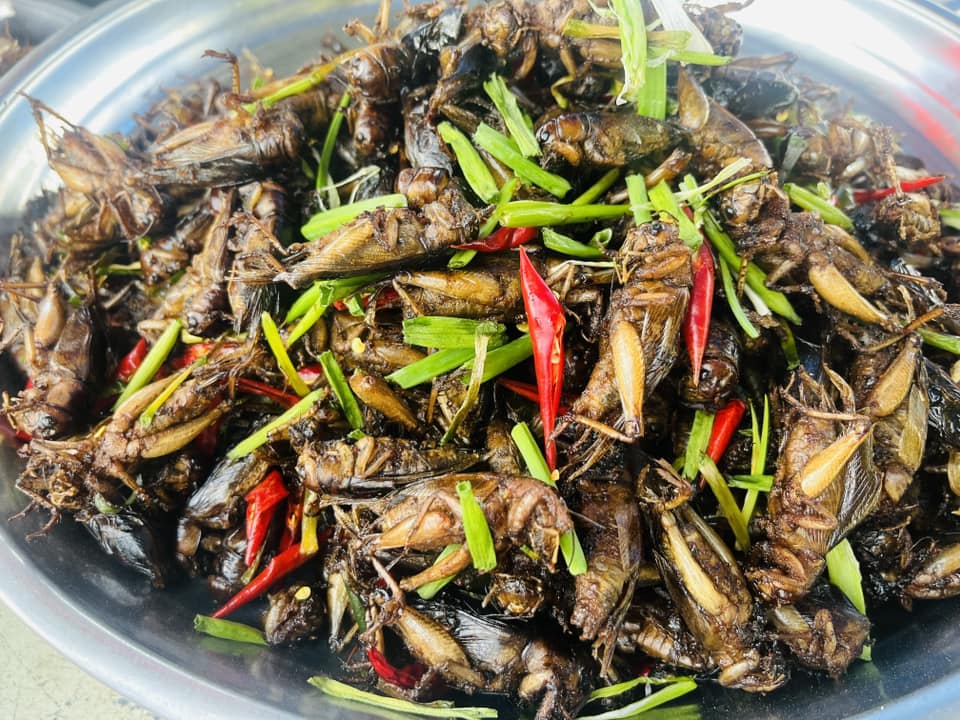What was food in Democratic Kampuchea like? When you think of Cambodia, it’s easy to picture the stunning temples of Angkor Wat or the bustling street markets brimming with vibrant flavors.
However, the period of Democratic Kampuchea (1975-1979) represents a dark chapter in the nation’s history, one that not only devastated its population but also decimated its culinary heritage. Under the brutal regime of the Khmer Rouge, food became a weapon of oppression, and traditional dishes that once graced Cambodian tables vanished amidst a backdrop of suffering and starvation.
Table of Contents
The Khmer Rouge Regime: A Culinary Catastrophe
In April 1975, when the Khmer Rouge seized power under Pol Pot, they launched a radical campaign to transform Cambodian society. Their vision was one of agrarian socialism, compelling the population to abandon urban life and work in rice fields and collective farms. This sweeping change shattered the daily lives of Cambodians, and their rich culinary traditions became one of the first casualties.
Food, during this tumultuous time, was reduced to a mere means of survival. Traditional dishes like fish amok and bai sach chrouk became nearly impossible to find as the Khmer Rouge aimed to eradicate cultural elements they deemed “bourgeois.” The population was left to scavenge for whatever they could find, often resorting to wild plants, insects, or anything edible in a desperate bid for sustenance.



To grasp the scale of the culinary tragedy, one must examine the infamous food policies of the Khmer Rouge. Rations were meager, with many families receiving only a small bowl of rice each day. Dishes that relied on fresh ingredients, herbs, and spices vanished, replaced by a lifeless diet of boiled rice and thin, watery soup. The loss of flavor mirrored the loss of freedom experienced by the people.
The Search for Survival: Food in Democratic Kampuchea
During the Khmer Rouge era, food became a means of control. The regime enforced strict regulations on farming and food production, leading to widespread famine and malnutrition. Those unable to meet the demands of collective farms faced dire consequences. Food scarcity was rampant, and many Cambodians were forced to eat whatever they could scrounge together.
Survival tactics emerged among the population. Villagers learned to identify edible wild plants and mushrooms, while some resorted to foraging in the jungle. The ingenuity of the Cambodian people shone through, but the nutritional value of their diets plummeted. The rich culinary tapestry that once defined Cambodia was threadbare, fraying under the weight of oppression and despair.
Even amid the darkest times, Cambodians relied on oral traditions to pass down recipes and culinary knowledge. This effort ensured that their culinary heritage was not entirely lost. The desire for traditional flavors remained, hidden in the hearts and memories of those who had once savored them.




Food in Democratic Kampuchea – The Aftermath
The fall of the Khmer Rouge and Democratic Kampuchea in 1979 marked the end of one of history’s most brutal regimes, but the scars left on Cambodian society were profound. The culinary landscape, once rich with flavors and traditions, lay in ruins. Rebuilding would take time and effort, but Cambodians were determined to restore their food culture.
As the country began to heal, street food vendors played a crucial role in reviving traditional dishes. The bustling streets of Phnom Penh and Siem Reap came alive again as vendors served up classic Khmer fare. Fish amok, kuy teav, and num banh chok began to reappear, each bite a reminder of a heritage that had nearly slipped away.
Today, Cambodia’s street food scene reflects both resilience and innovation. Vendors blend traditional recipes with new influences, creating a fusion that showcases the country’s culinary renaissance. You can taste the history in every bowl of samlor korko (vegetable stew) or plate of larb (minced meat salad), with each dish telling a story of survival and revitalization.
For more insights into Cambodia’s street food scene, check out articles about Phnom Penh’s street food or discover the best local dishes to try when visiting.
The Culinary Legacy of food in Democratic Kampuchea
While the legacy of Democratic Kampuchea is forever marred by tragedy, it serves as a poignant reminder of the importance of cultural preservation. The revival of Cambodian cuisine is not merely about food; it is about reclaiming a national identity and honoring the memory of those who suffered.

In recent years, culinary tourism has emerged as a powerful tool for showcasing Cambodia’s rich heritage. Tours focused on street food, cooking classes, and culinary experiences invite visitors to engage with the culture and history of Cambodia through its cuisine. This new wave of tourism helps to support local economies and provides a platform for Cambodians to share their stories and food with the world.
Cambodia has made remarkable strides in reviving its culinary landscape, but it’s crucial to remember the shadows of the past. As you explore the vibrant street food scene, reflect on the resilience of the Cambodian people and the rich tapestry of flavors that have survived against all odds.
For a more in-depth exploration of the impact of the Khmer Rouge on Cambodia’s food culture, read about Cambodian culinary traditions and how they are being revived today.

